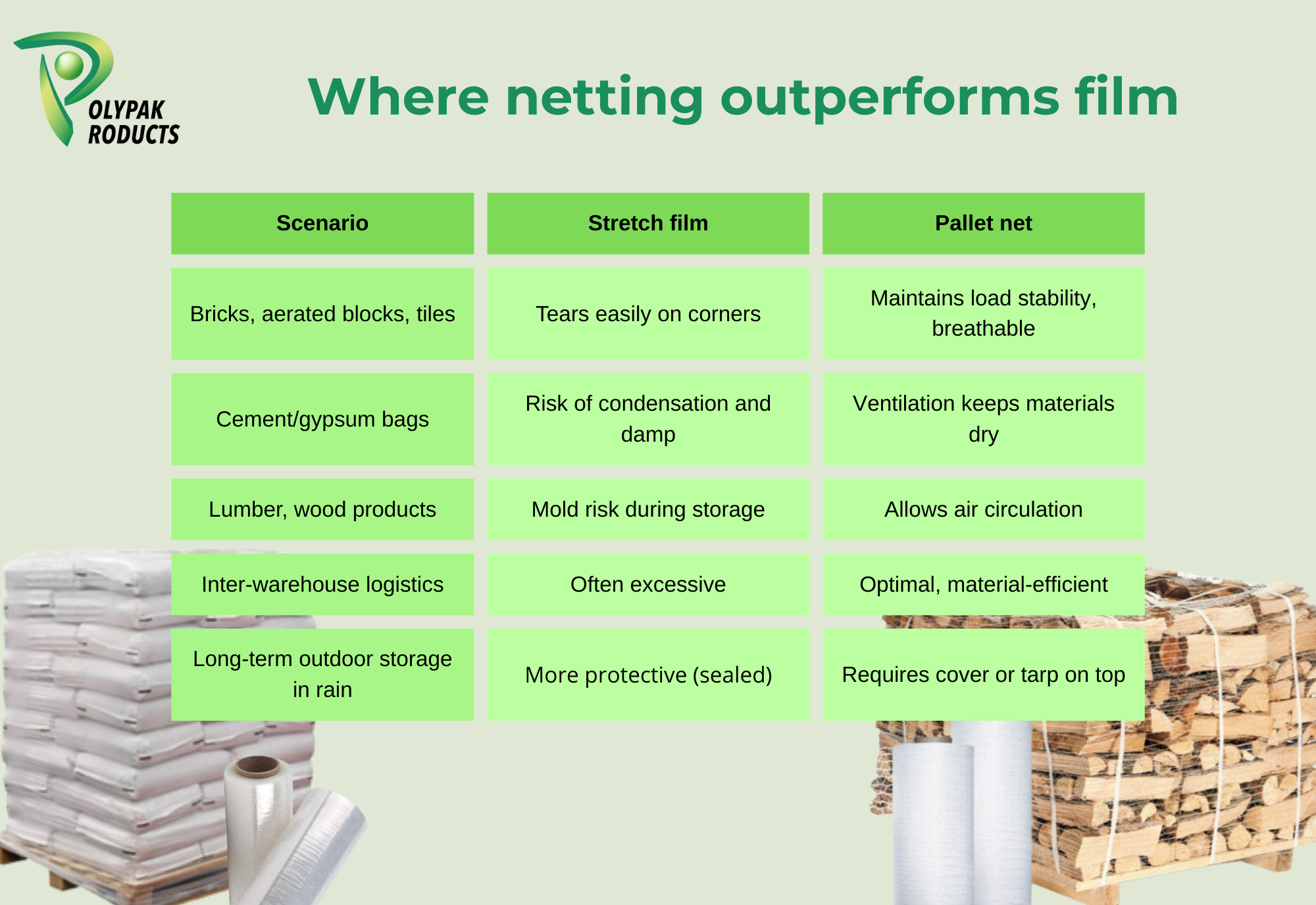Mechanical damage
Sharp edges of bricks, tiles, or blocks can easily cut through stretch film, causing pallet destabilization, loss of goods, and costly waste.
Load shifting during braking and cornering
According to EN 12195-1 (calculation of securing forces; 0.8 g forward, 0.5 g sideways and backward), packaging must withstand significant dynamic forces. If the wrapping lacks rigidity, stacked materials may “breathe” and shift, increasing the risk of collapse.
Condensation under film
Temperature fluctuations can cause cement or gypsum bags to absorb moisture, even when “protected” by sealed stretch film.
Unpredictable storage conditions
At warehouses or depots, pallets are often stored under semi-open shelters. Closed film accelerates degradation of the packaging when exposed to humidity.

Pallet net is a modern and cost-efficient packaging solution for construction materials. It prevents mechanical damage and moisture issues, improves pallet stability, and reduces logistics losses. For manufacturers and logistics providers, adopting netting means not only safer and higher-quality deliveries, but also measurable cost savings.
2020 All Rights Reserved.
2020 All Rights Reserved.